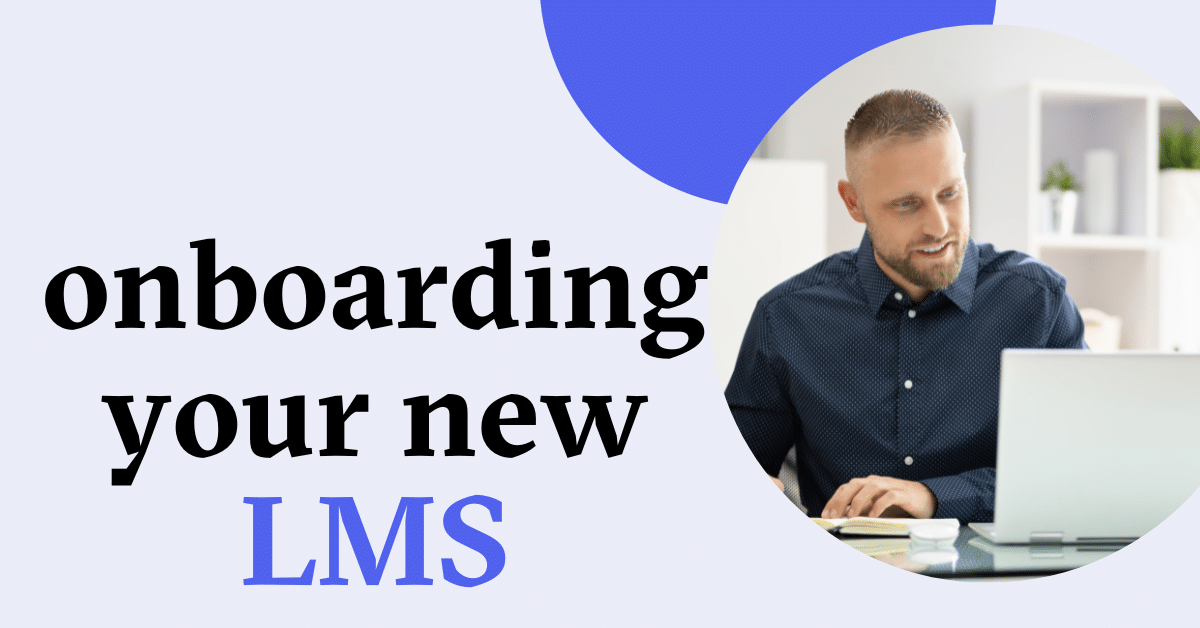Onboarding Your New LMS
November 18, 2024
LMS Implementation Overview
Getting the right learning management system (LMS) for your organization is your first step. Once you choose your LMS, taking the time to onboard your learning platform is key to success in building a learning culture, enabling your learners, and developing your organizational knowledge. A successful implementation can transform your training initiatives and create lasting impact across your organization.
Understanding LMS in Corporate Training
A learning management system (LMS) is a software platform designed to streamline corporate training by managing and delivering online learning content. Organizations leverage these learning platforms for employee education, compliance training, and professional development courses. Above all, these learning systems promote continuous learning cultures, which is a key initiative for businesses of all sizes.
According to the 2023 LinkedIn Learning Report, 89% of learning and development professionals agree that proactively building employee skills for today and tomorrow will help navigate the evolving future of work – solidifying the importance of a comprehensive learning strategy.
The LMS Onboarding Journey
1. Onboarding Kickoff
Like many multistep projects, the LMS onboarding journey begins with a kickoff after choosing an LMS provider. In this early project phase, you’ll typically meet with your learning platform vendor to flesh out important topics like aligning on organizational goals, assembling an internal project team, planning eLearning content, and prioritizing platform needs.
Best practices during kickoff:
- Assign roles for primary decision makers across departments
- Align on expectations early for learning initiatives and timelines
- Set organizational goals and success metrics
- Evaluate existing content and identify gaps
- Plan content creation strategy
2. Project Plan Creation
Following the kickoff, technical work and learning portal training begins along with timeline creation. Your LMS provider will outline processes for data mapping, system workflows, and third-party tool integrations. You’ll receive in-depth platform training and guidance on content uploading.
Key considerations:
- Partner with internal IT teams for technical support
- Maintain regular stakeholder communication
- Establish clear decision-making processes
- Document system setup preferences
3. System Validation
During this critical phase, you’ll complete comprehensive user testing after courses are built in the LMS. This allows you to assess platform performance and address any issues before full deployment.
Essential validation steps:
- Create detailed testing plans
- Include diverse user groups in testing
- Evaluate all key features
- Document and resolve issues
4. Approval and Launch
After thorough testing, your team will provide final approval prior to launch. All stakeholders must confirm the LMS aligns with company goals, fulfills learning objectives, and functions properly.
Launch considerations:
- Complete pre-launch checklist
- Consider pilot testing
- Plan communication strategy
- Prepare support resources
5. Monitoring and Optimization
Post-launch monitoring identifies performance issues and optimization opportunities. Regular assessment ensures smooth functionality and positive user experience.
Monitoring focus areas:
- System performance
- User engagement
- Content effectiveness
- Technical issues
- Security and compliance
Implementation Best Practices
Create Comprehensive Plan
Start by conducting a thorough needs assessment to identify specific requirements and goals. Develop a detailed implementation timeline with key milestones, tasks, and responsibilities. Design a training program that includes user instructions, administrative training, and ongoing support systems.
Technical Preparation
Before implementation:
- Assess current infrastructure
- Identify necessary upgrades
- Configure system settings and permissions
- Organize and upload content
- Test across all platforms and devices
User Training and Feedback
Successful implementation requires:
- Interactive training materials
- Orientation sessions
- On-demand resources
- Regular feedback collection
- Continuous improvement processes
Tesseon LMS Solutions
Tesseon provides comprehensive implementation support through experienced teams, technical expertise, and ongoing assistance. Our platform offers:
Streamlined implementation processes
- Expert technical support
- Comprehensive training resources
- Continuous system optimization
- Regular platform updates
Keys to Success
Successful LMS implementation depends on careful planning, thorough testing, and ongoing optimization. With proper support and execution, organizations can create an engaging learning environment that drives employee development and organizational growth.
The journey from selection to full implementation requires dedication and attention to detail, but the results – improved training efficiency, enhanced learning outcomes, and stronger organizational knowledge – make the effort worthwhile.
Regular monitoring and adjustment ensure your LMS continues to meet organizational needs and deliver value over time. By following these implementation guidelines and leveraging Tesseon’s expertise, organizations can maximize their LMS investment and create a robust learning culture.
share this blog
STAY CONNECTED
Sign up for our newsletter for the latest Tesseon information.
Related Blogs
What our clients are saying about us
Disclaimer: The information provided on this blog page is for general informational purposes only and should not be considered as legal advice. It is advisable to seek professional legal counsel before taking any action based on the content of this page. We do not guarantee the accuracy or completeness of the information provided, and we will not be liable for any losses or damages arising from its use. Any reliance on the information provided is solely at your own risk. Consult a qualified attorney for personalized legal advice.

